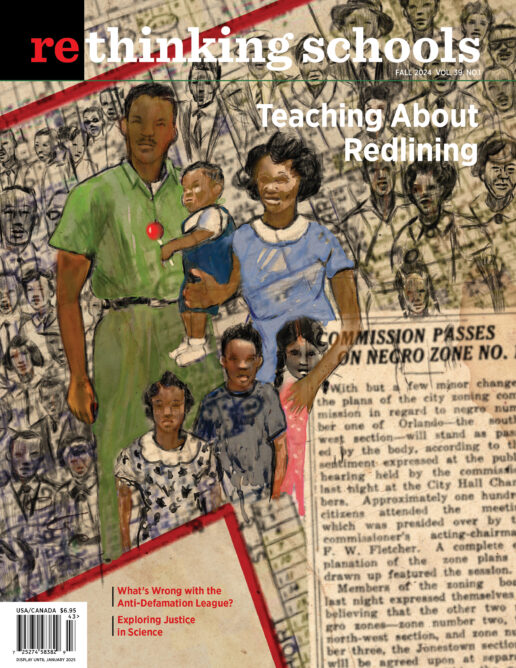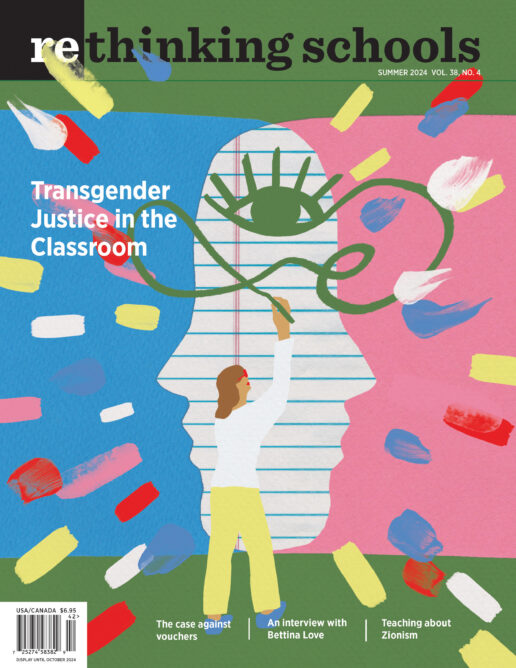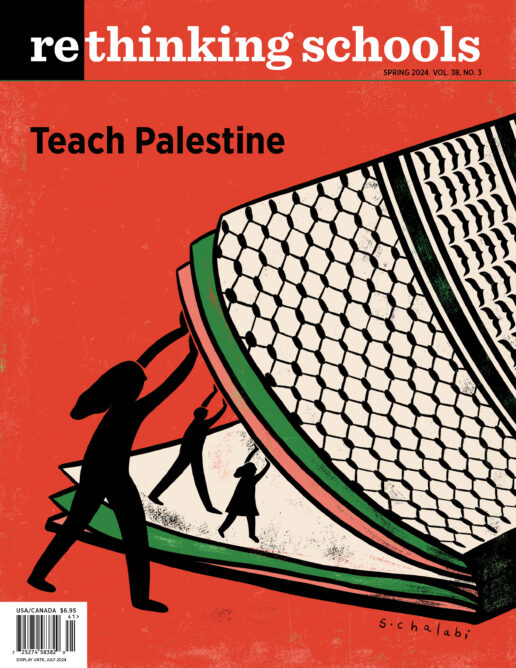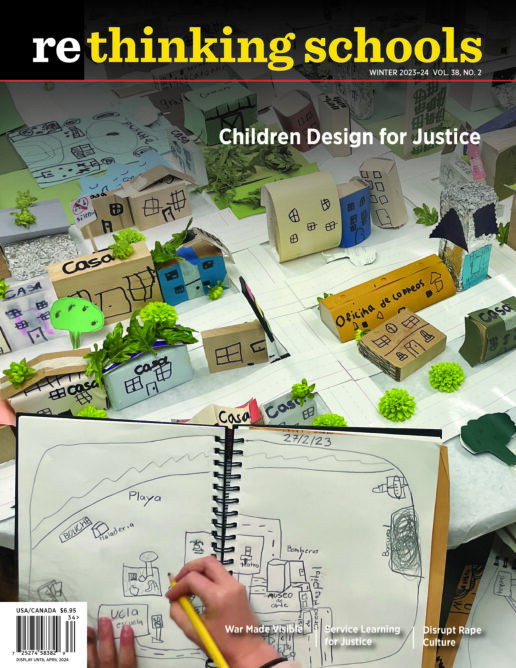-
When They Tried to Steal Our Classrooms
Teachers learn that the district’s plan for a desperately needed school renovation is based on “100 percent utilization” — teachers will rotate through classrooms, losing the home bases students depend on. They organize to change the plan.
-
What Happened to Spanish?
How high-stakes tests doomed biliteracy at my school
A 3rd-grade bilingual teacher describes how administrators’ anxiety about standardized test results erodes both a school’s commitment to Spanish literacy and students’ love for learning.
-
¿Qué le pasó al español?
Cómo fue que las pruebas de alta exigencia condenaron a la educación bilingüe en mi escuela
Una maestra bilingüe describe cómo la ansiedad que sienten los administradores escolares con respecto a los resultados de los exámenes estandarizados disminuye el compromiso de la escuela con el desarrollo de la lectoescritura en español y el amor de los estudiantes por el aprendizaje.
-
Passion Counts: The “I Love” Admissions Essay
Seniors write admissions essays based on something they feel passionate about, discovering at the same time that they are “college material.”
-
Space for Young Black Women: An Interview with Candice Valenzuela
The story of the development, challenges, and successes of a support group for Black girls at an Oakland, California, high school.
-
Who’s Stealing Our Jobs?
NAFTA and xenophobia
As a way to deal with racial tensions between his Black and Latina/o students, a high school teacher examines the impact of the North American Free Trade Agreement.
-
My So-Called Public School
School foundations and the myth of funding equity
A teacher uses her own school to illustrate how school foundations perpetuate inequality within districts and states.
-
Lead Poisoning
Bringing social justice to chemistry
Building on the lead-poisoned water scandal in Flint, Michigan, a Chicago chemistry teacher helps her students explore lead poisoning in their own city.
-
Ebola: Teaching Science, Race, and the Media
Two teacher educators encourage their students to think about the impact of racial and colonial biases on media coverage of science issues—and on scientists.
-
Racism, Xenophobia, and the Election
As teachers and students return to classrooms this fall, together we have to try to make sense of a tumultuous presidential campaign and a summer of racial violence that have […]
-
Fighting to Teach Climate Justice
There remains a huge gulf between the human and ecological consequences of the climate crisis and the puny attention given to the crisis in the school curriculum. The few paragraphs […]
-
Mexican Teachers Fight Corporate Reform
“What they’re doing to us is subtle genocide,” Euterio Garcia, an Indigenous teacher from Oaxaca, Mexico, told reporter Shirin Hess. “I am a bilingual teacher for Chinanteco and Spanish. I […]
-
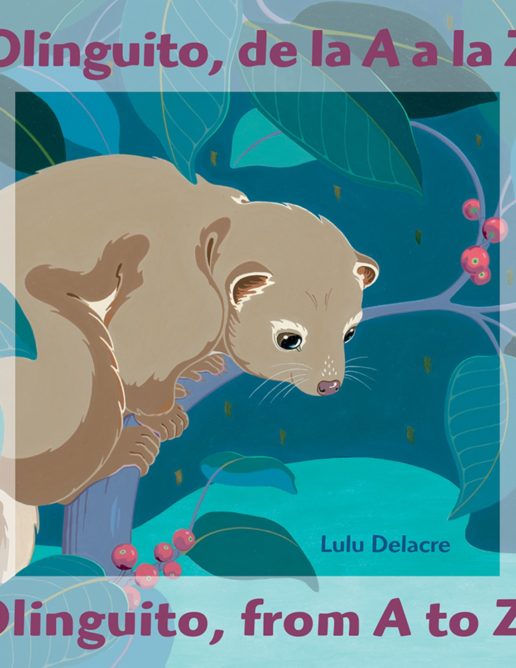
Our picks for books, videos, websites, and other social justice education resources 31.1
Check out these valuable resources, reviewed by Rethinking Schools editors and Teaching for Change colleagues.
-
Saul Alinsky Lives!
People Power: The Community Organizing Tradition of Saul AlinskyEdited by Aaron Schutz and Mike MillerVanderbilt University Press, 2015 Fifteen years ago, I was part of a community organizing effort that […]
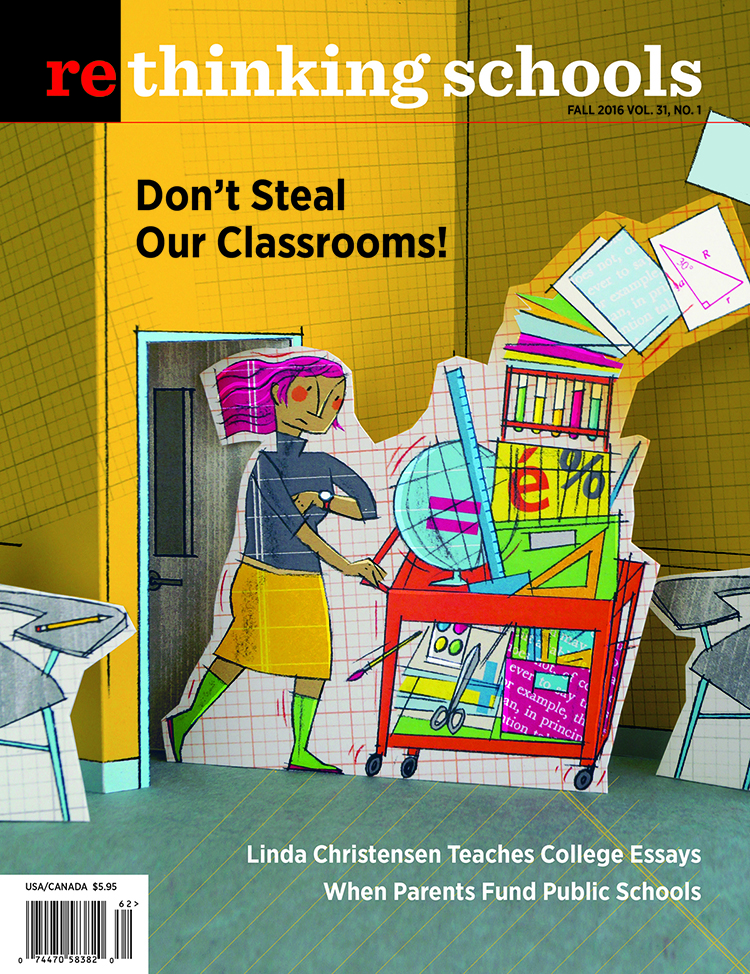
Volume 31, No.1
Fall 2016
Annual Subscription: $24.95
Purchase Digital Copy: $4.95
To purchase individual paper copies of the magazine email us or call customer service at 1-800-669-4192

